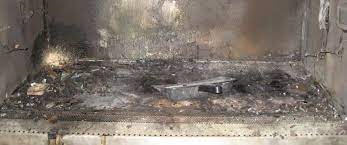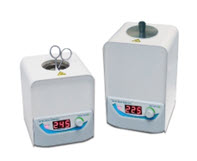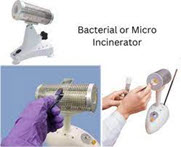Open Flames Hazard for Labs
January 2, 2023
Open flames cause fires, explosions, destroy biosafety cabinets and ruin facilities. Risks for personnel can be anything from burn injuries to deaths. At Michigan State University we ask that our labs look for ways to eliminate the need for Bunsen burners, ethanol/alcohol burners and any other type of open flame work to eliminate this hazard. As part of our safety culture, we look for alternatives for sterilizing tools, keeping materials in a sterile environment, and performing aseptic techniques for procedures to mitigate contamination.
Example of Eliminating Flame in a Process
The Microbiology and Molecular Genetics Department Undergraduate Director prepares hundreds of media and agar plates for the undergraduate microbiology classes and was able to remove open flame from their processes. Prior to our request, plate pouring was done in a biosafety cabinet with a Bunsen burner flame used at the opening of the pouring vessel, contamination was an occasional issue. When the Director poured plates in the biosafety cabinet without the Bunsen burner flame using proper aseptic technique there was no contamination saving them valuable time and resources. Many older techniques are passed down without questioning the previous methodology, and in this case, it was beneficial to revisit procedural doctrine for improved safety and product quality.
Reasons to Eliminate Flames
Increased contamination
Splatter of contaminated material
As shown in the example above, flame can cause splatter of materials resulting in noticeable contamination. Even when working on the bench, flaming the top of a flask may only aerosolize the material on the lip of the flask and not sterilize the material. Convection using the heat from the flame may not be enough to keep contamination out.
Contamination due to disrupting biosafety cabinet air flow
Heat from the flame will disrupt the biosafety cabinet air currents causing the cabinet to not operate properly, no longer keeping the area sterile. This can be seen using smoke generating equipment. The heat is intense above the flame and will quickly degrade the HEPA filter causing the cabinet to be unable to filter contaminants properly.
Explosion and fire hazard

When using a Bunsen burner gas builds up in a biosafety cabinet as part of the air is recycled, becoming highly volatile and eventually can cause an explosion. Stanford University has pictures on their website showing what happens (picture above).
Ethanol burners are not any safer. Used in biosafety cabinets the same concerns for air current and HEPA filter destruction increasing contamination exist. Also, they are easily knocked over causing the ethanol to spill while catching on fire, the fire spreads rapidly and can ruin not only the biosafety cabinet. As ethanol evaporates the material can again be recycled through the air filtration system of a cabinet to build up creating an explosion. On the bench the spill can be toward a person or catch other material in the lab on fire as the ethanol fire spreads causing a larger fire and burn hazard.
Alternatives to Flame
Micro Bead Sterilizer

Micro Incinerator

FireStar Instant on/off flame burner


